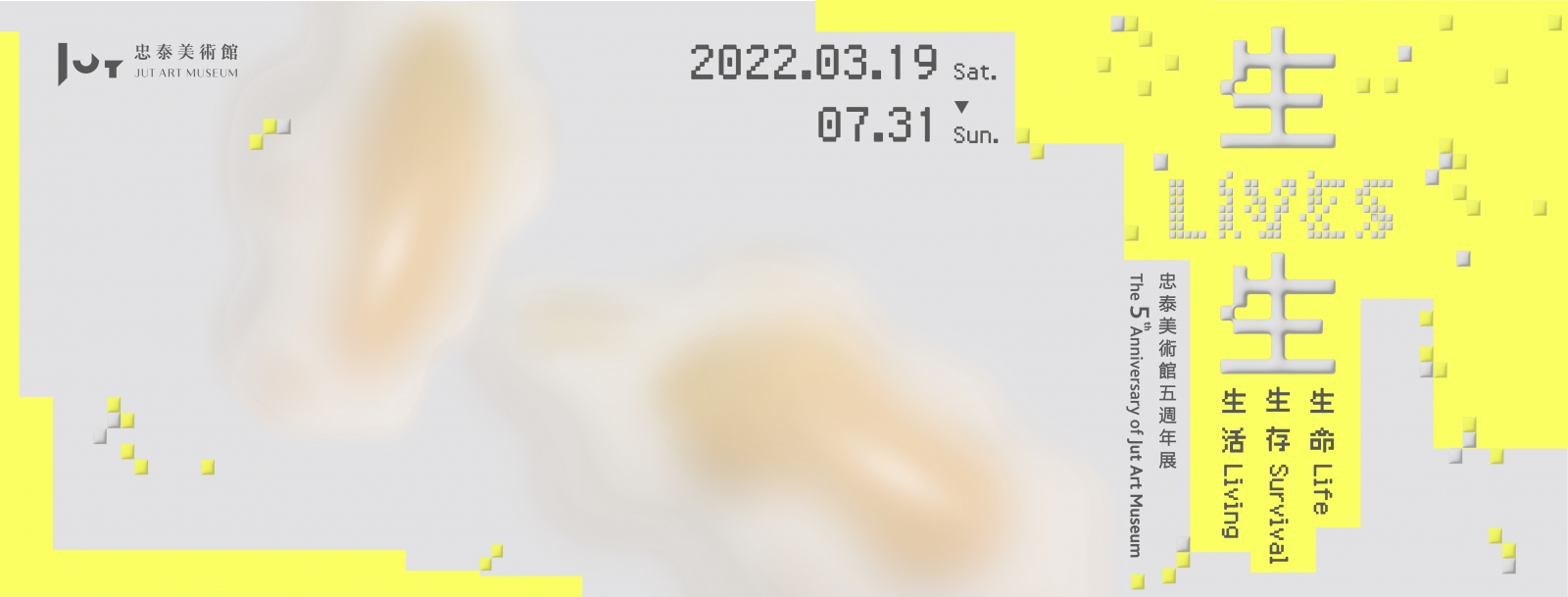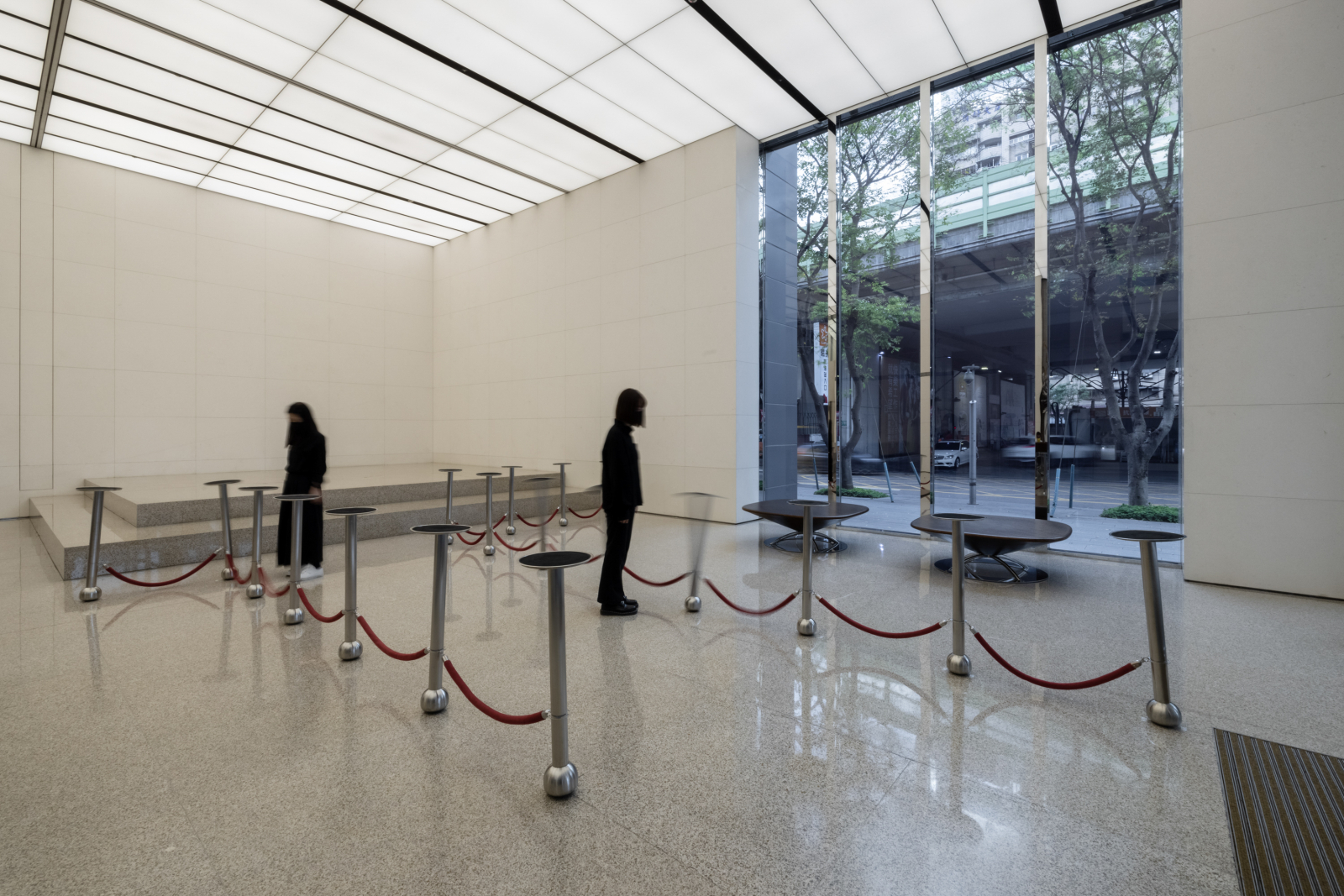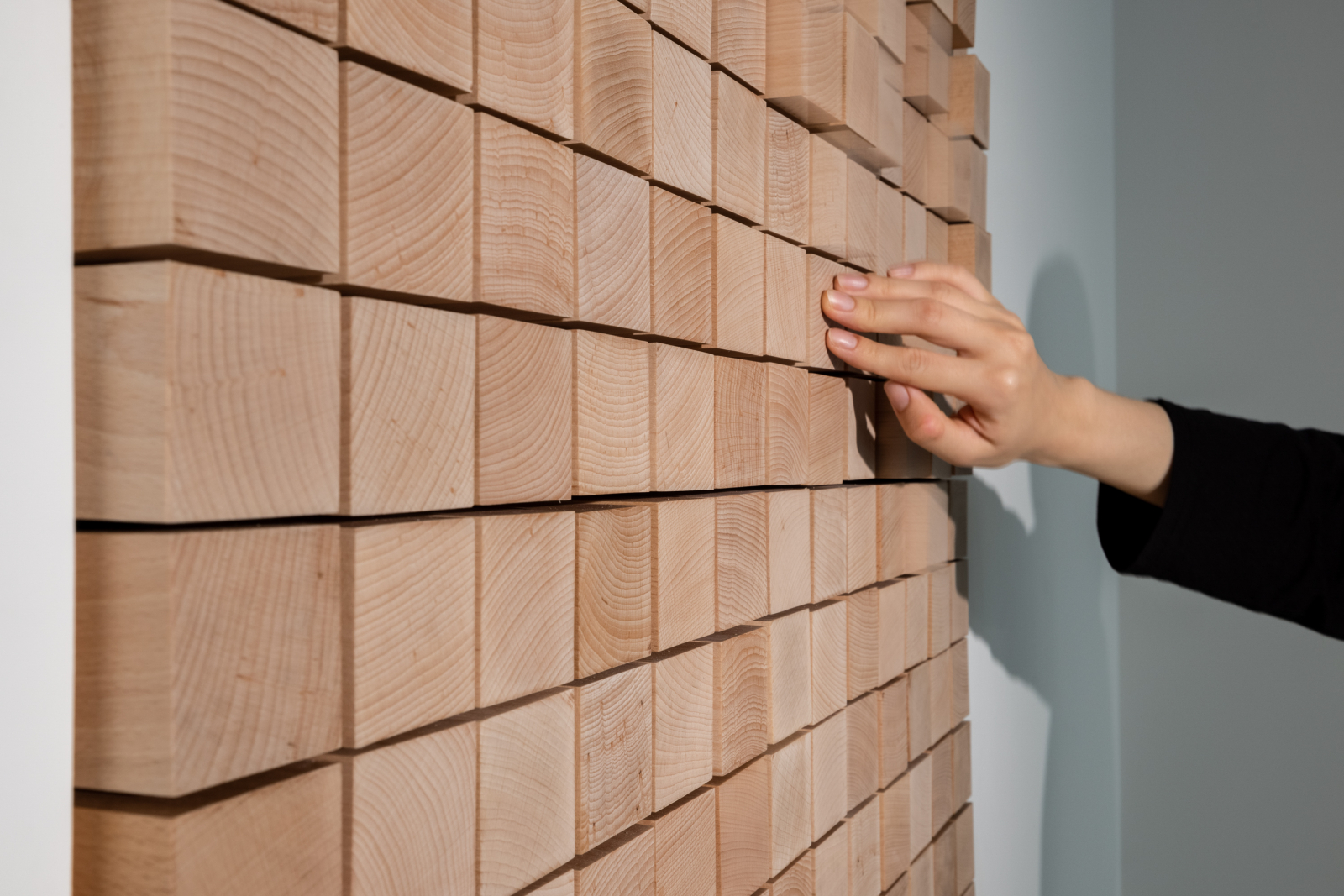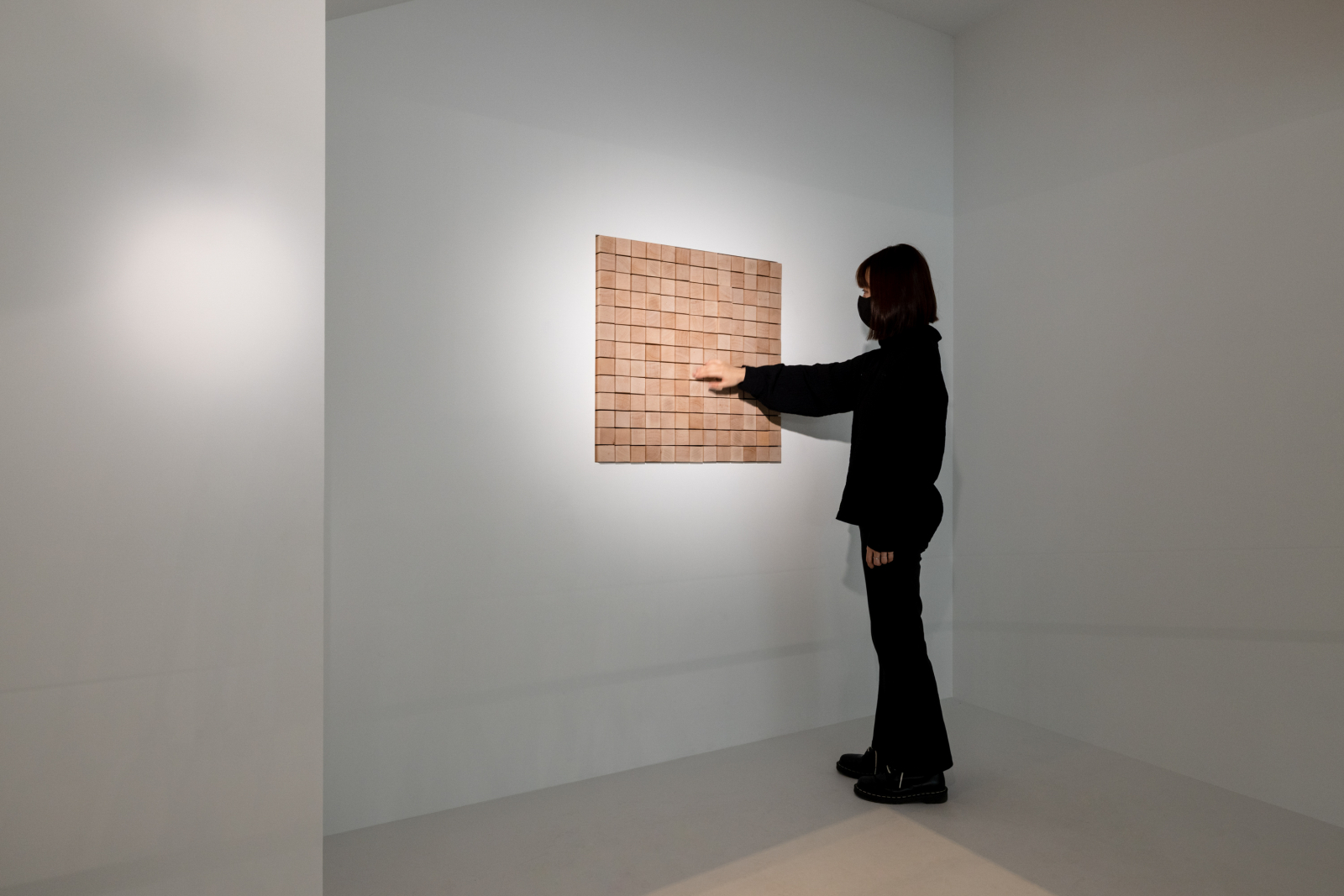LIVES: The 5th Anniversary of Jut Art Museum
Multiple interpretations of life in confronting the future
Jut Art Museum marks its 5th anniversary with the exhibition, LIVES: Life, Survival, Living, which opens on March 19. In the face of a global future fraught with uncertainty, the LIVES exhibition attempts to re-contemplate and explore the most fundamental yet radical of issues: of “life”, “survival”, and “living”. The theme and structure of the exhibition is the culmination of a close reading of multiple interpretations of “lives” by the Museum team from 2019. Curators Escher Tsai and Amy Cheng have been invited as co-curators, supported by Ming-Tsung Lee, Kuang-Chi Hung, and Lu-Lin (Jerry) Cheng as curatorial advisors who participate in discussions and dialogs lasted over a year. The exhibition brings together 12 teams of local and international artists who explore, through interdisciplinary and cross-sectoral conversations and contemplation, the various possibilities of lifeforms, the philosophies, and ethics of survival, as well as the technological development and modes of living with a variety of forms including sound, images, in-museum, and outdoor installations. The exhibition runs from March 19th to July 31st.
Jut Art Museum brings together interdisciplinary experts in two years of research and planning.
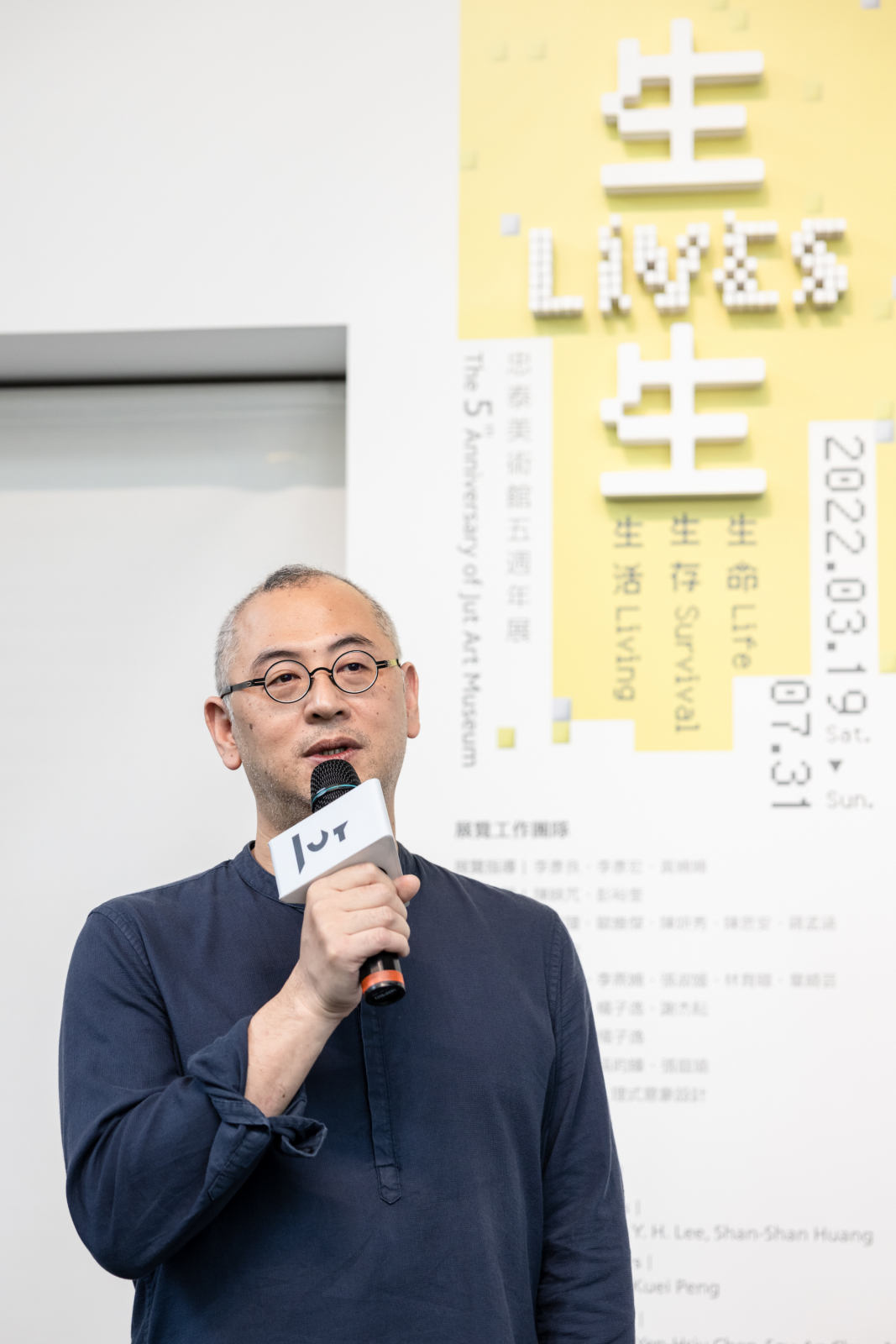
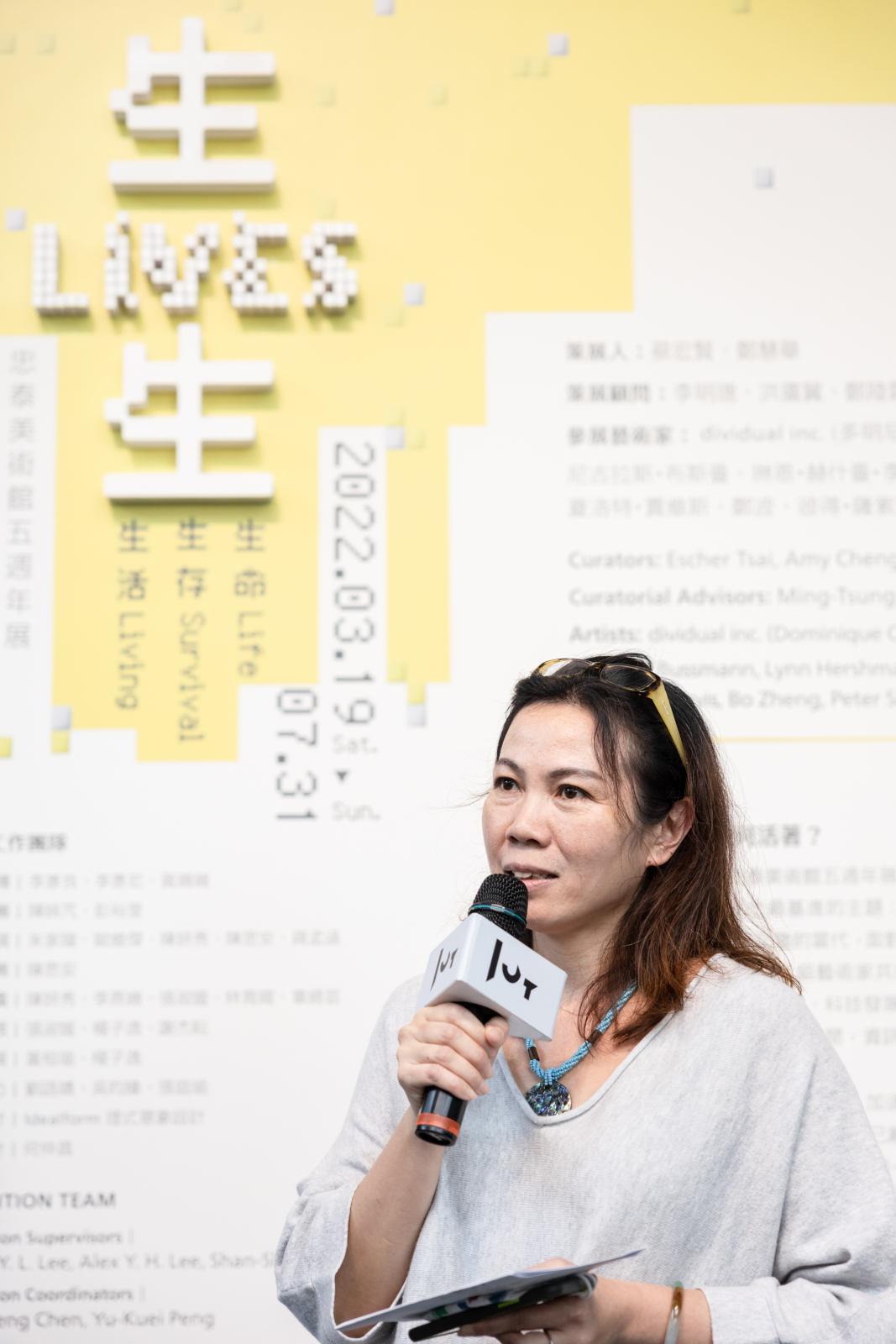
“In the Future, How Shall We Live?”
Toward the end of 2019, a new coronavirus was detected among human beings, by March of the following year, the World Health Organization officially declared the coronavirus to be a global pandemic, which brought upheaval to the world. The topic of the Jut Art Museum 5th anniversary exhibition took shape in the midst of this turbulent state of affairs, originated from a series regular research meetings initiated in 2019 by the Museum team. Upon exploring and crystalizing the theme of “lives,” integrating both the word’s noun “life and verb “to live connotations, and through a close reading of the multiple layers of the theme of “lives,” the museum invites Escher Tsai and Amy Cheng to co-curate the exhibition, with Ming-Tsung Lee, Kuang-Chi Hung, and Lu-Lin (Jerry) Cheng as curatorial advisors. Through interdisciplinary dialogs and contemplation, these experts joined hands across disciplines and sectors as they attempt to explore our past and future direction in a contemporaneity where technology and culture intersect.
With “the future” as the exhibition’s main axis, LIVES encompasses the exploration of various topics including bio art, artificial life, genetic engineering, ethics of technology, interspecies, gender and class, etc. Participants are 12 teams of renowned artists from Germany, Canada, the United States, the United Kingdom, China, Denmark, and Taiwan -- including Ed Atkins, Nicholas Bussmann, Sheryl Cheung, dividual inc., Charlotte Jarvis, Joyce Ho, Kuang-Yi Ku, Lynn Hershman Leeson, Peter Sasowsky, SUPERFLEX, Tim Wei, Bo Zheng. Through varieties of artistic forms including sound, images, and installations, investigate and seek possibilities of various lifeforms, the philosophies and ethics of survival, as well as technological developments and modes of living. The works in this exhibition collectively incorporate the multiple interpretations and perspectives of “life.” From the curatorial process to each individual work, dialogs filled with complexity and richness are embodied in an interdisciplinary and cross-sectoral methodology.
Breaking the boundaries between art and everyday life: a corporeal and auditory reexperience of the city.
The exhibition attempts to break down boundaries between art and everyday life by inviting the audience to experience the urban space through their bodies and through sound. As the audience enters the exhibition venue, they will first encounter Joyce Ho’s work, Balancing Act IV, which wraps around the Jut Art Museum in an amalgamation of the dual imagery of “cradle” and “fence”. The work makes viewers to aware their positionality specifically in light of new definitions of contact/distancing between the self and others, the openness/shutdown within of society, and the connection/distanced during the COVID-19 pandemic. At the lobby of the Jut Headquarter is the new work Heads Down. Created on-site, Heads Down deconstructs and inverts the “retractable barriers” ubiquitously used for crowd control. By dint of game-based interaction, the viewers initiate a renegotiation of this ambiguous relationship. Joyce Ho’s work ostensibly demarcates two polarities while simultaneously blurring these boundaries through interactivity and accessibility, thus enabling the viewer to witness the formation of various relationships in everyday life with new


Artist Sheryl Cheung’s soundscape work, 1700 Steps, is on display from the Museum lobby to nearby Liugongzhen Park. The number of steps referenced in the title alludes to a conversation overheard at the park during the artist’s fieldwork. Audiences are guided by the GPS navigation on their own mobile devices, as they are immersed in the memory, history and cityscape of Taipei; enabling them to experience “ordinary” scenes in the vicinity of the museum, as well as the “extraordinary” pandemic conditions. Sheryl Cheung stated this as an experimental project of sound-oriented walking. She intends to encourage the visitors’ re-reading and dialogue with the surrounding ecology.
Exploring possible forms of life.
Infinite possibilities exist for forms of life. In 1970, British mathematician John Horton Conway devised the “Game of Life” in an attempt to explore possibilities for life based on calculations. The interactive installation work, Game of Life, by Taiwanese artist Tim Wei in 2022 generates motion and electronic sounds according to the calculus in Conway’s “Game of Life,” using wooden cells that the audience can press to create additional layers of sensory and informational dimensions. The initial unit setting becomes a musical score that integrates digital aesthetics in the production of countless continuous patterns and audio trajectories over time. Our macrocosmic world becomes a microcosmic game of life.
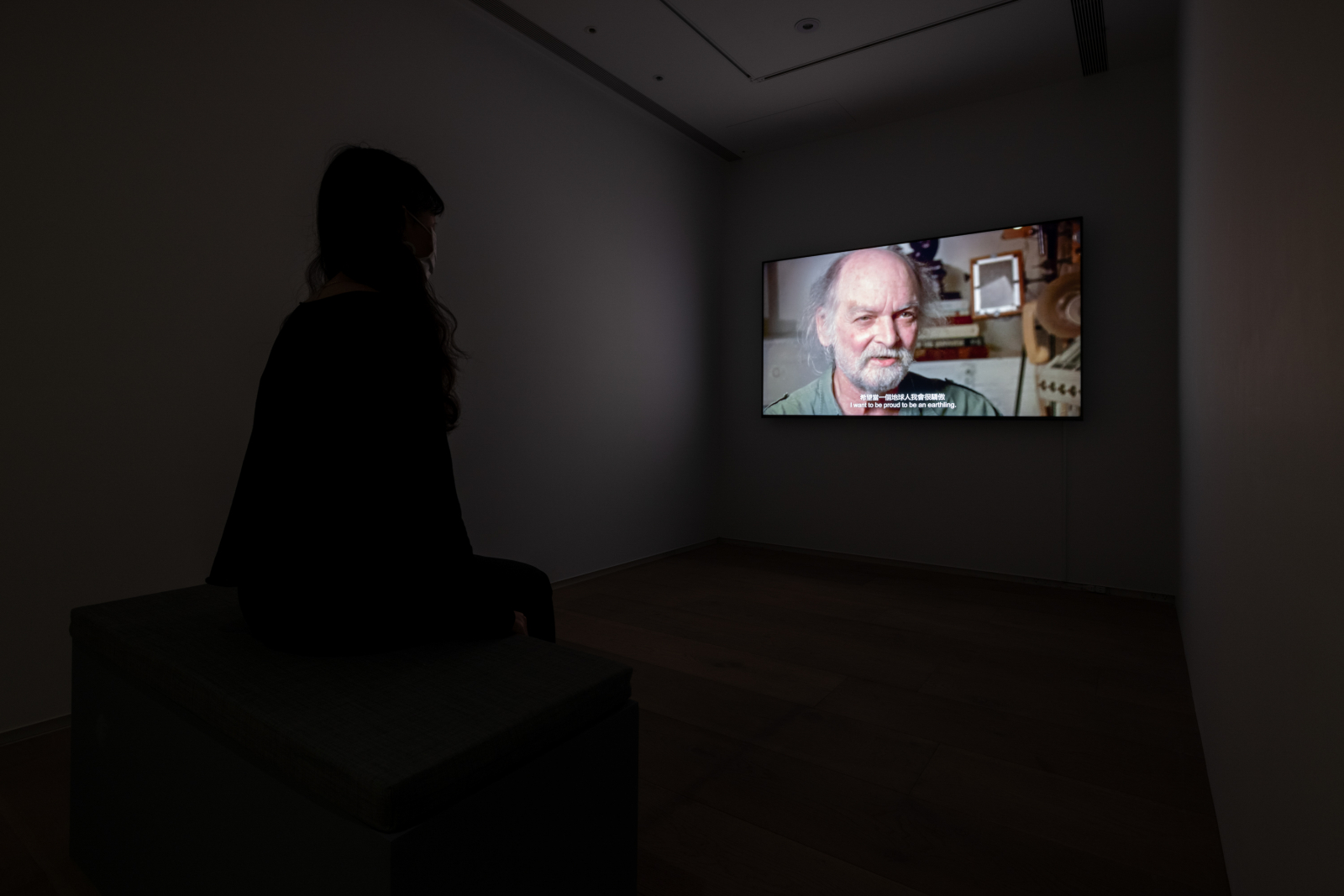

As a code that constitutes life, genes have also become an informational vehicle for expanding civilization. The documentary film Heaven + Earth + Joe Davis by American filmmaker Peter Sasowsky chronicles the scientific and artistic explorative journey of enfant terrible Joe Davis, widely regarded as the godfather of BioArt. Davis synthesizes a poem and the sound of vaginal contractions into the genetic molecule, which is then transmitted into outer space as a communication bridge between human and extraterrestrial life by transposing, storing, and transmitting forms and meanings of life.
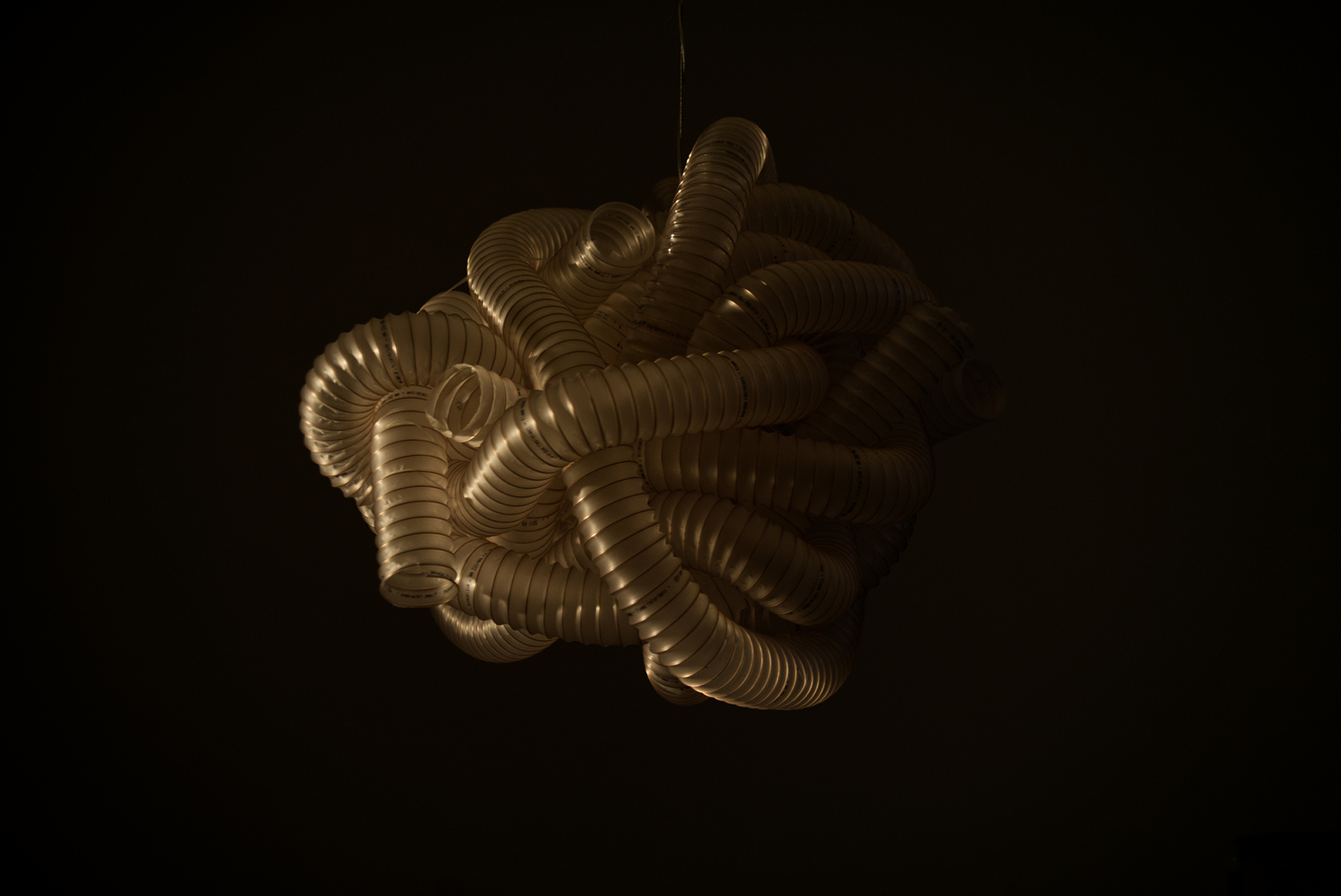
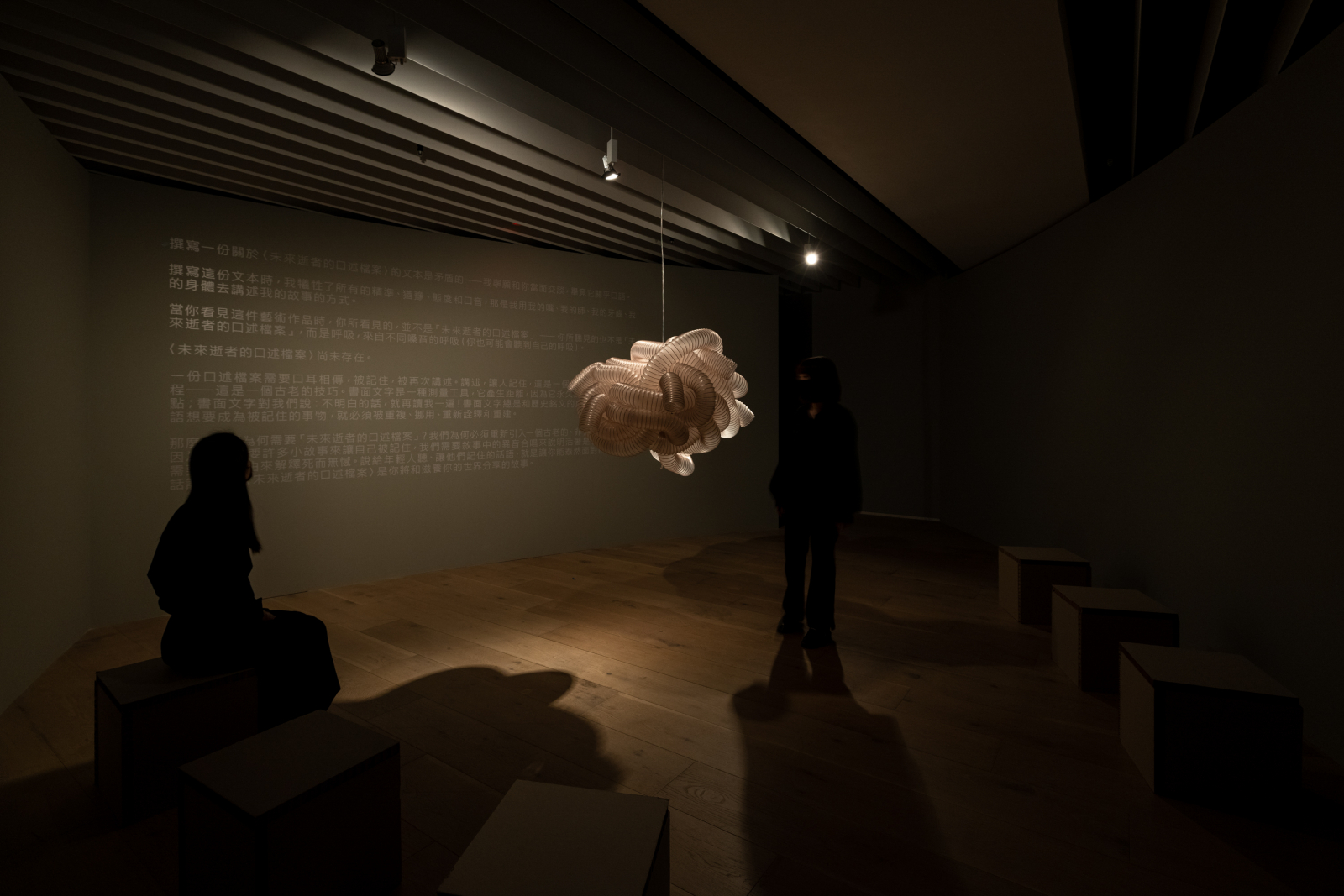
In an era of quarantines and border closures, the German composer and artist Nicholas Bussmann believes in the true feelings that originate in human physical senses and in intuition. In his new commissioned work, The Oral Archive of The Future Dead, he has created a quasi-organic object suspended over the center of the exhibition space, which transmits faint light while emitting the sound of breathing. These “frequencies” and “energies” that represent life resonate with the viewer in a tranquil atmosphere, and are transformed into an introspective dialogue.
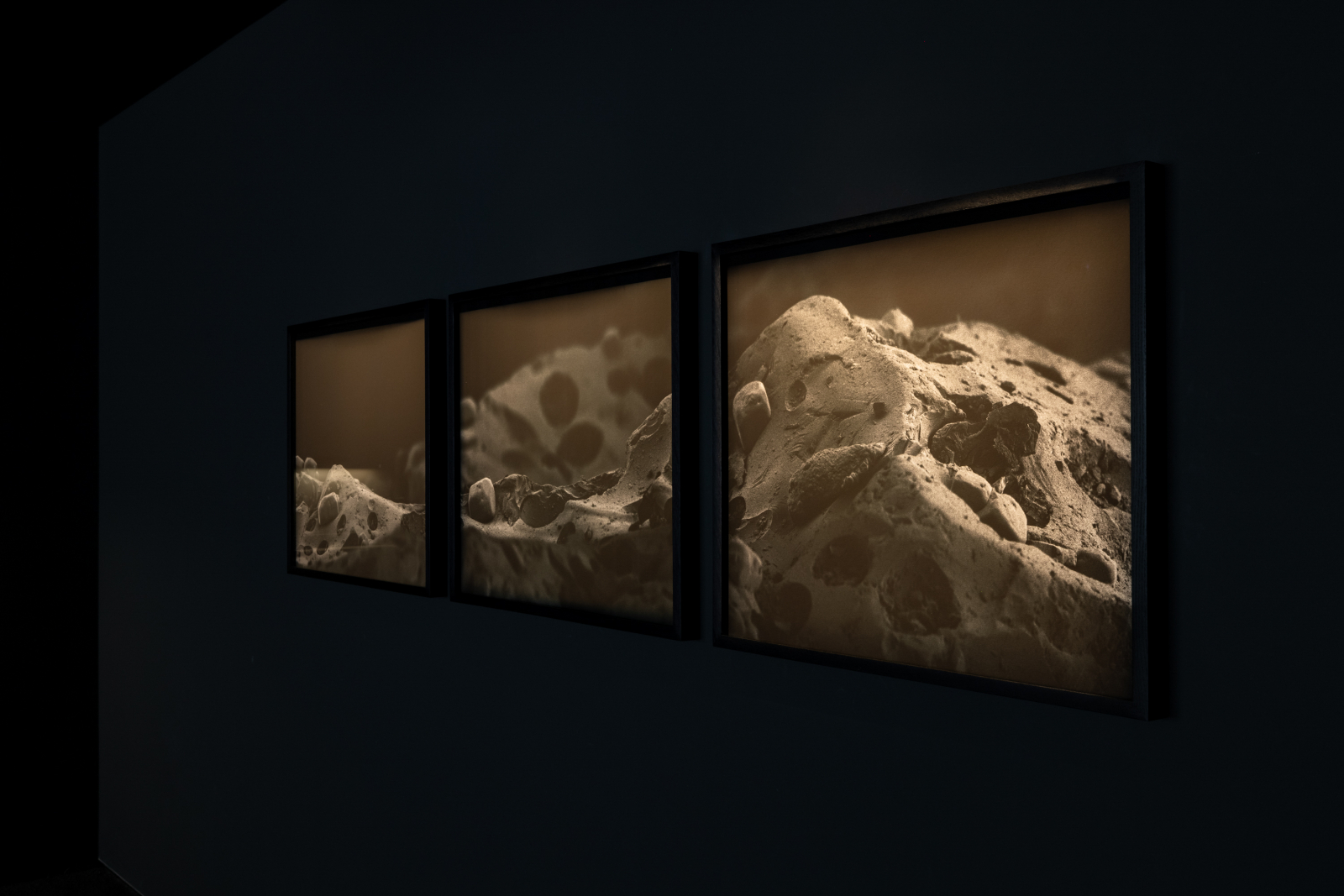
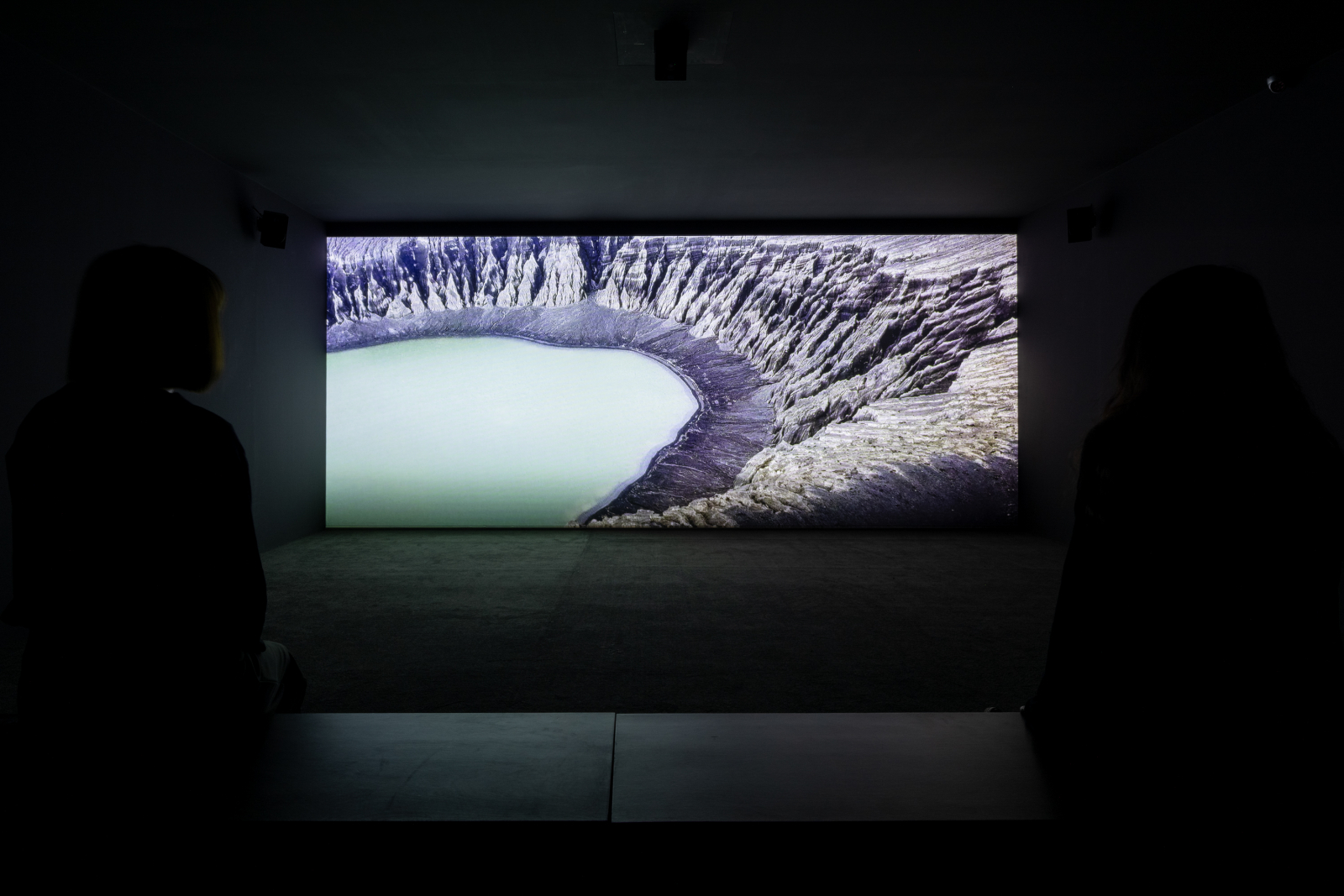
News of a volcanic eruption that destroyed the South Pacific island of Hunga Tonga was the focus of global media in early 2022. The Danish art collective, SUPERFLEX visited Hunga Tonga in 2018 for the film project, Hunga Tonga which challenges peoples’ perceptions of time, space, and species through a central narrative axis of a humorously imagined fictitious submarine humanoid organism which surfaces on Earth. In addition, the desolate and austere landscape in their photographic work Every End Is A New Beginning may initially appear to be a world untouched by the intervention of human forces, but is actually super-magnified images of a grain of sand collected on Hunga Tonga.
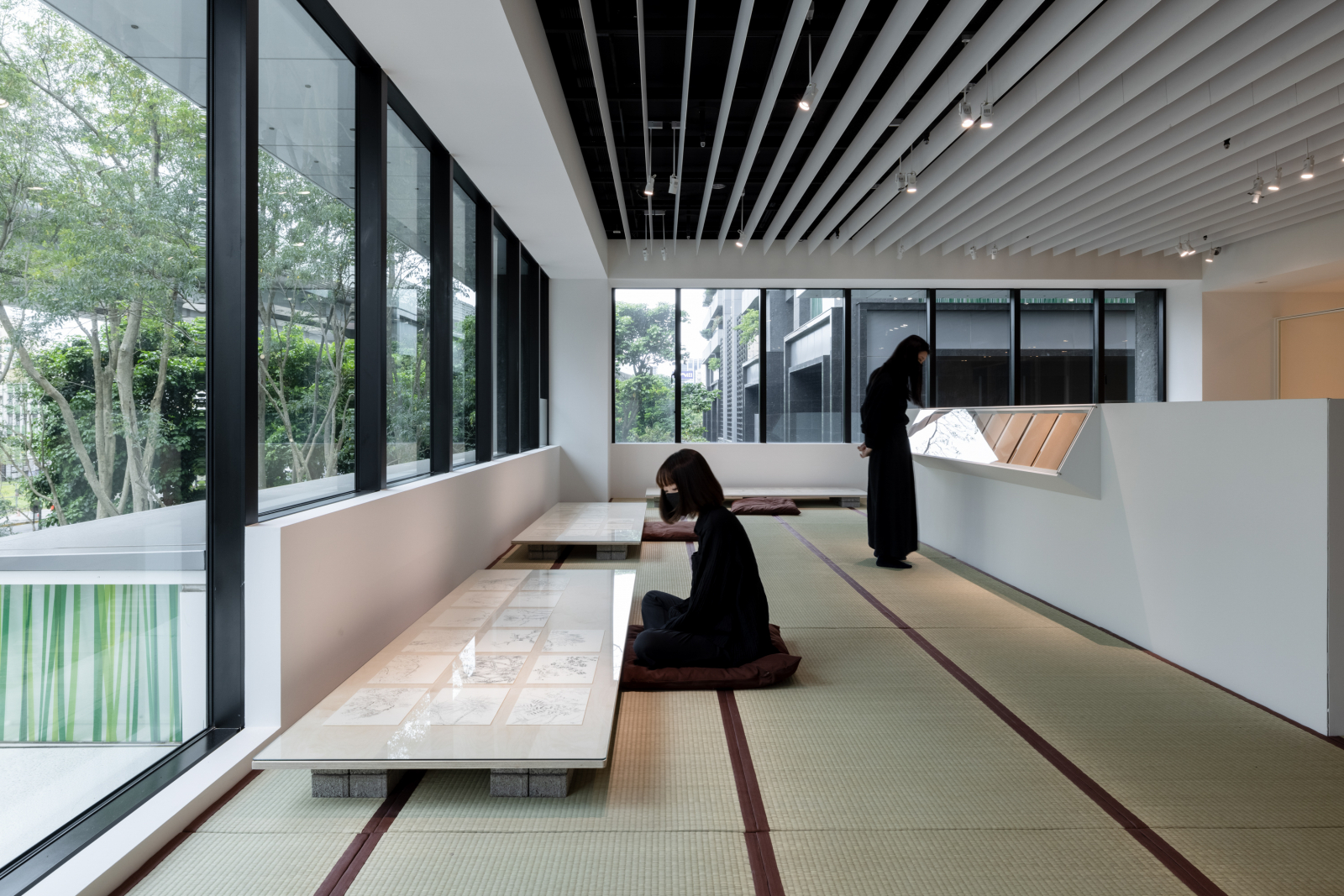
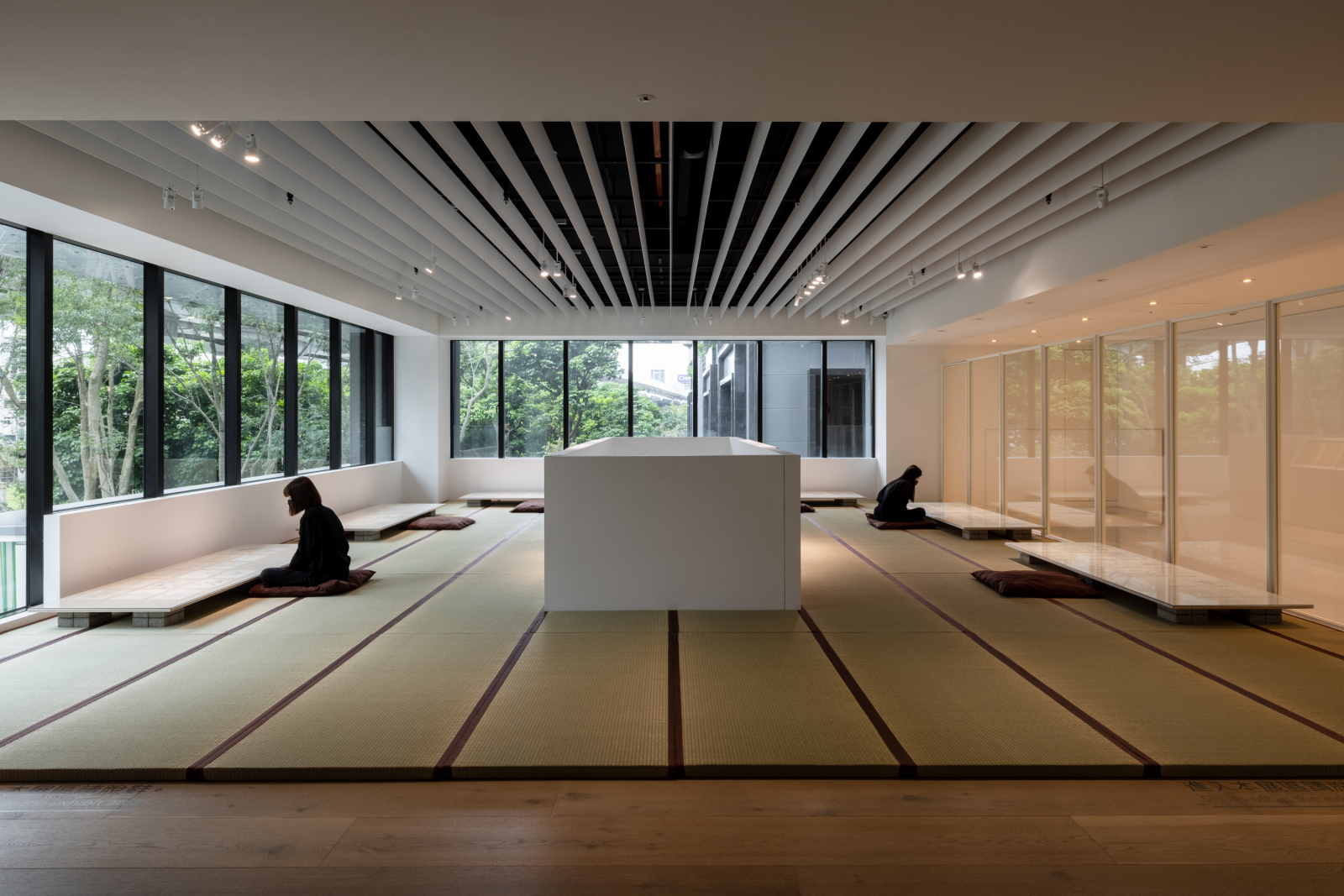
Exploring the possibilities of “life” within humanity and on Earth, Drawing Life series by Chinese artist Bo Zheng is concerned with the ethics of interspecies equality, through which he explores the path to coexistence for all beings. At the height of the COVID-19 pandemic, Bo Zheng made a daily sojourn into the alpine wilderness that surrounds his residence. He has since completed a series of 366 life drawings over 24 solar terms. In the exhibition, viewers can freely view these sketches of trees and grasses up-close in the exhibition space paved with tatamis, while in direct view of the greenery and environment surrounding the Museum, seen outside the windows.
Philosophy and Ethics in the Laws of Survival.
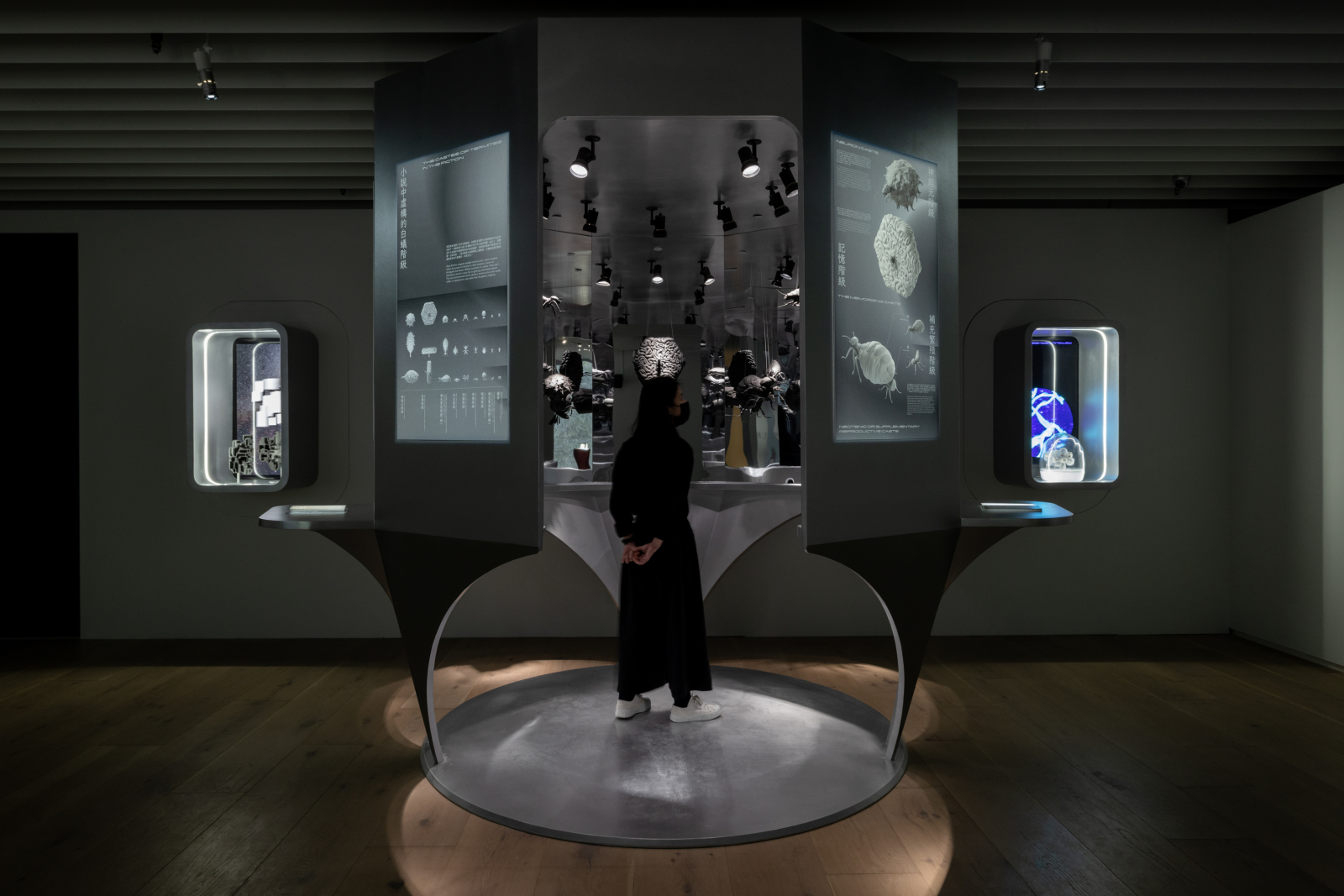
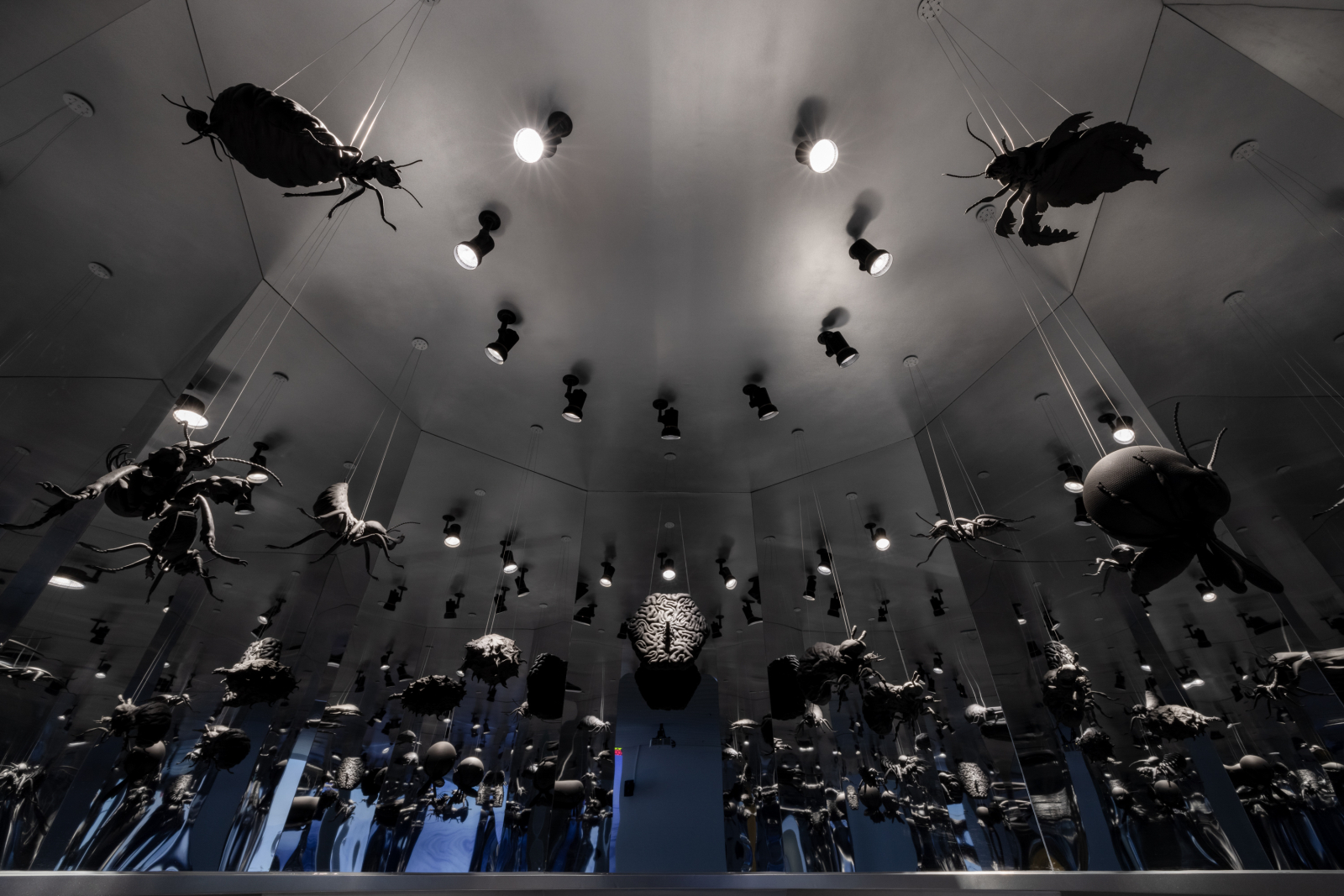
Queer Termite Project is a collaborative effort between artist Kuang-Yi Ku and scientists who study the eusocial termite to construct a fictitious future interspecies scenario. The project also attempts to contemplate ways of reinterpreting hierarchies within the termite society determined by reproductive organs and gender. The search for a new imagination of gender and labor classes among non-human organisms is an attempt to infer a Queer Ecosystem comprising human and non-human organisms within a mutually beneficial symbiotic structure.
Human medical and technological advancements since the 21st century have reinforced a necessity to redefine corporeal boundaries. The human body has become a site for transformation, hybridization, and magic. The body parts involved no longer belong to us. We have become the crystallization of co-creation and reconstruction, and have changed the laws of survival in human and non-human coexistence.
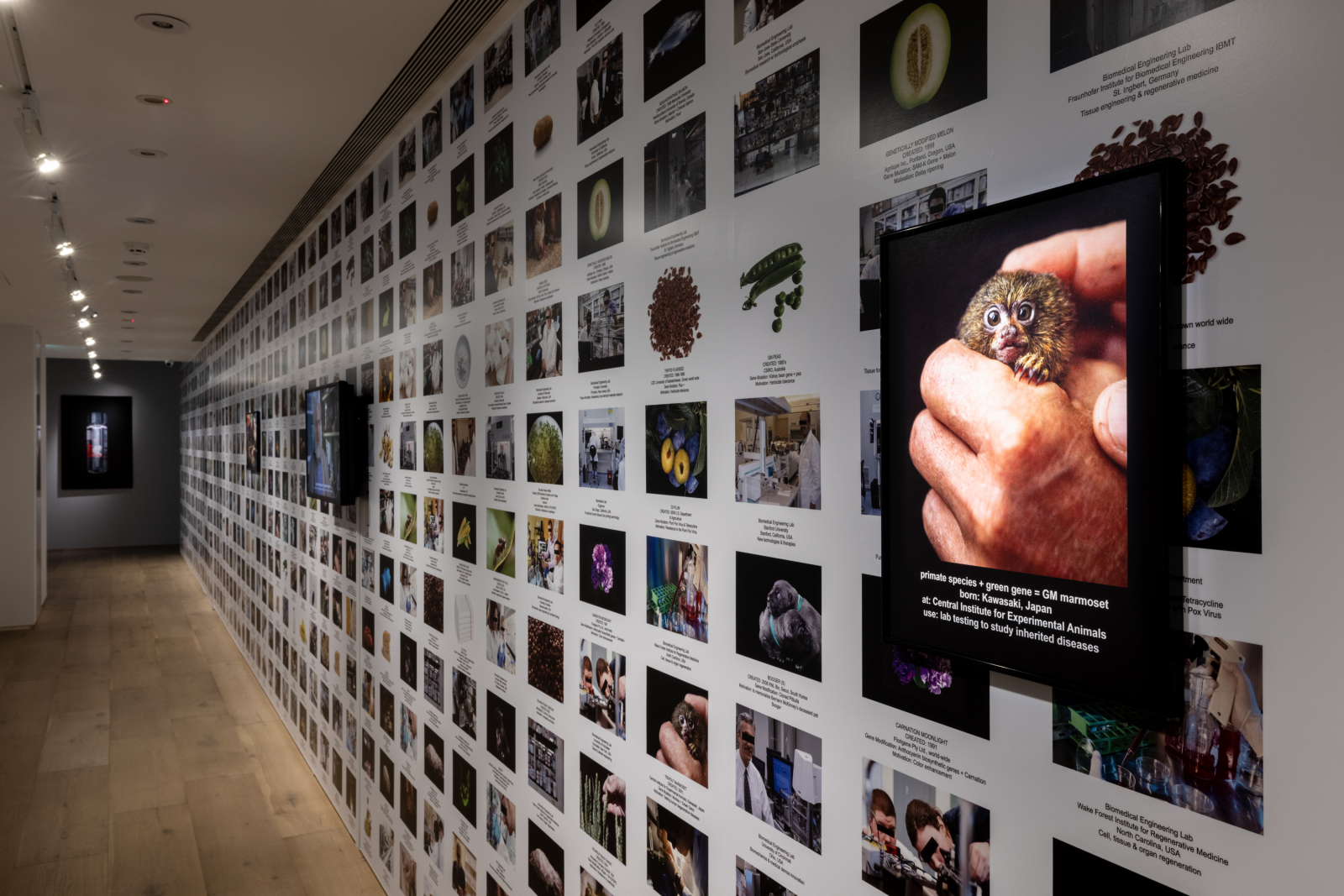
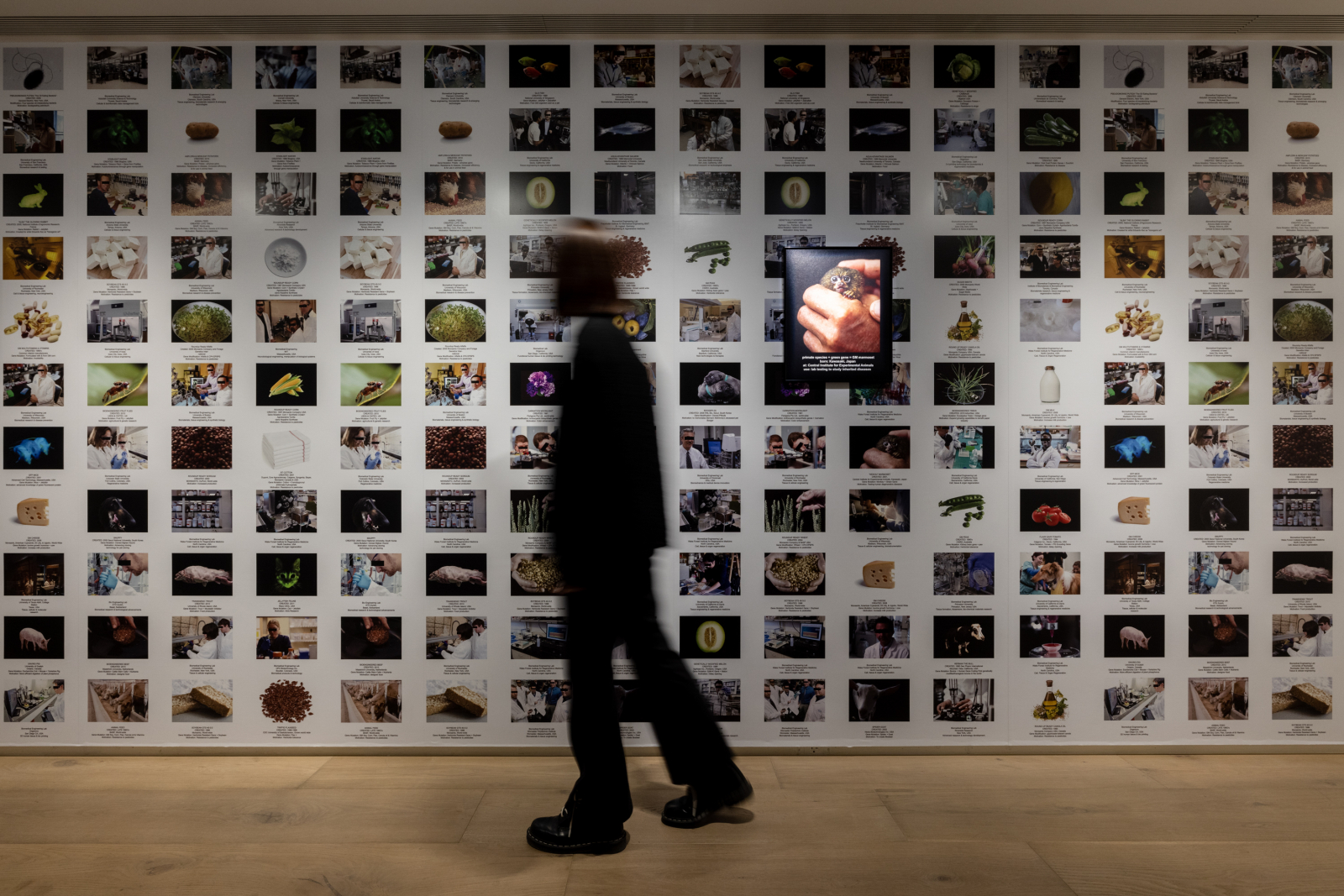
Renowned as a pioneer in media art, American artist Lynn Hershman Leeson’s work The Infinity Engine is a spatial installation and arena that reconstructs an existing genetic engineering laboratory. Photographs, paintings, documents, and videos of interviews with expert geneticists and ethicists are juxtaposed in this presentation of performance, information retrieval, synthetic DNA testing, and of a futuristic narrative of artificially enhanced human evolution.
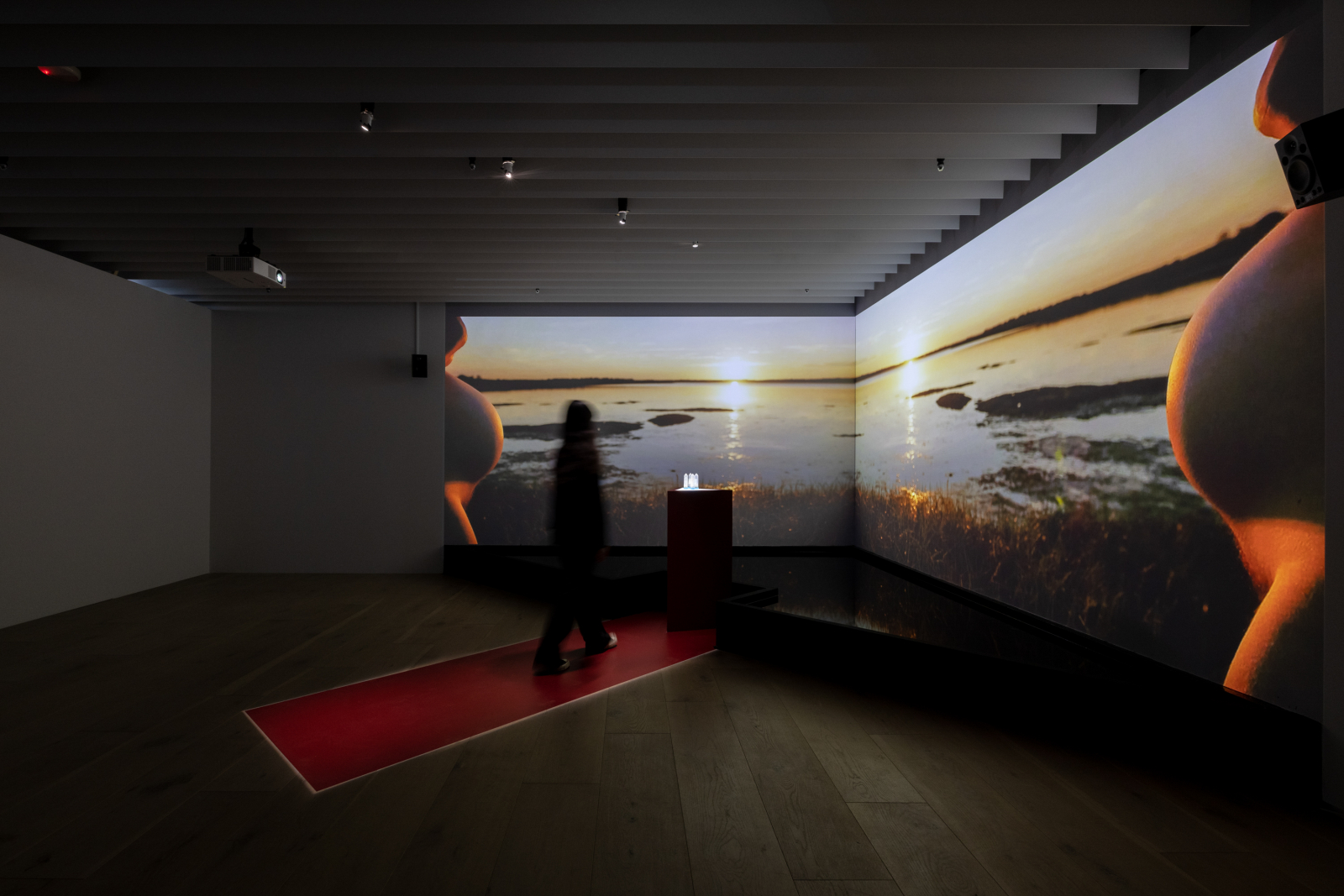

The work, In Posse by British artist Charlotte Jarvis and professor Susana Chuva de Sousal Lopes, is an on-going work/project to develop the world’s first batch of “female” semen. Semen has historically been revered as spiritual material such as a magical substance and as a totem that represents literal and symbolic potency, described as a life force, substance of the soul, a drop of the brain, divine, or equal to ten drops of blood. In Posse serves as a declaration and an ethical autobiography that aims to rewrite the existing cultural narrative; to use art and science to disrupt the mainstream patriarchal values and traditional reproductive hierarchies.
Technological and scientific development and the imagination of modes of living.
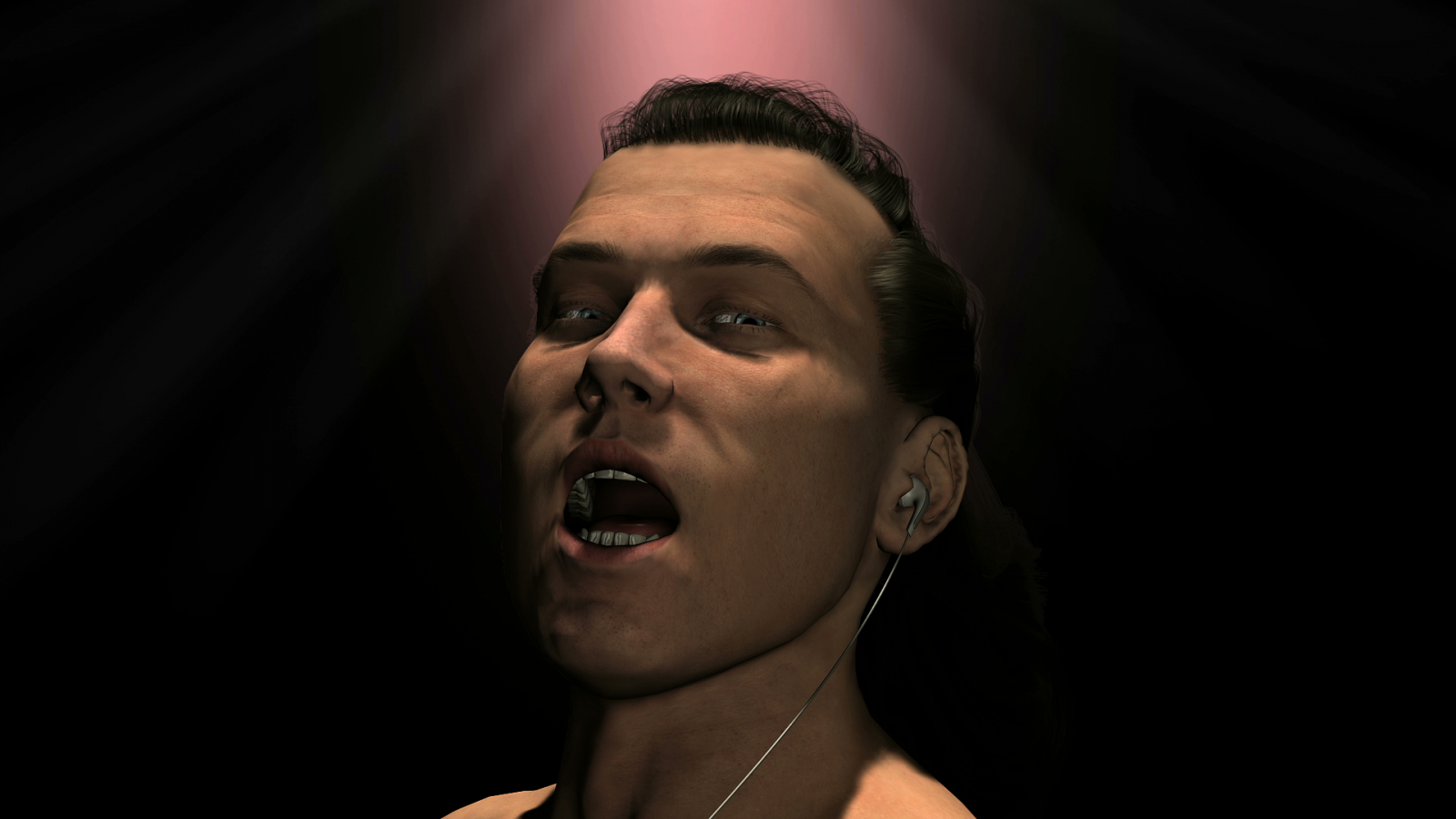

British artist Ed Atkins’s work Warm, Warm, Warm Spring Mouths uses a motion-capturing device and facial recognition software to create a “digital avatar” with his own face as a prototype. The figure is both Atkins himself, as well as a visualized “drift” of countless consciousnesses in the virtual space. The minimalist, fluid form presented in the work is a vehicle for complex, tortuous sentiments that perhaps originate in queries about life and modes of survival. In an era where an impending “metaverse” is a hot topic, Atkins’s work has long portended the void of an anticipatory yet anxious “flow of consciousness” that oscillates between the finite and the infinite.
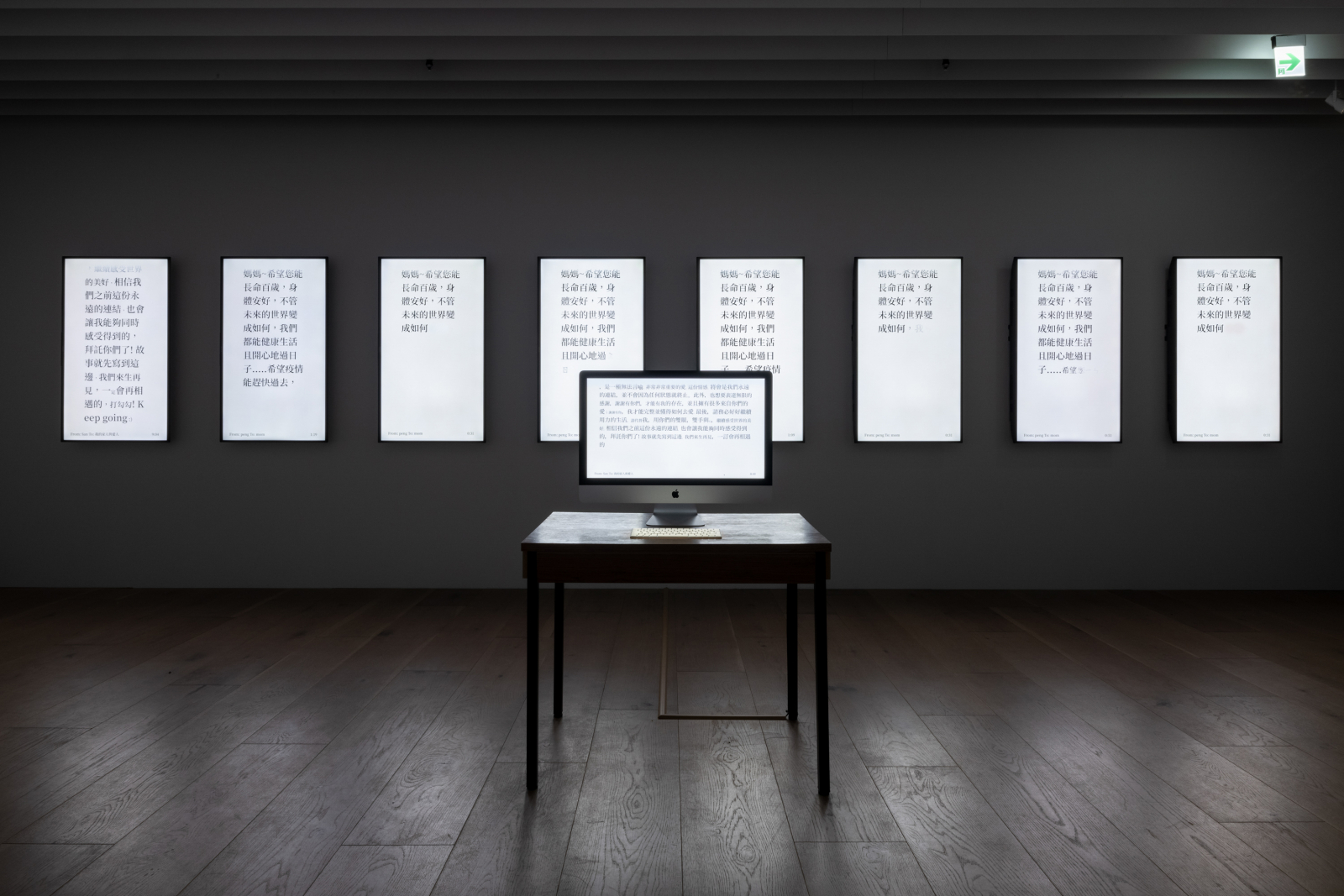
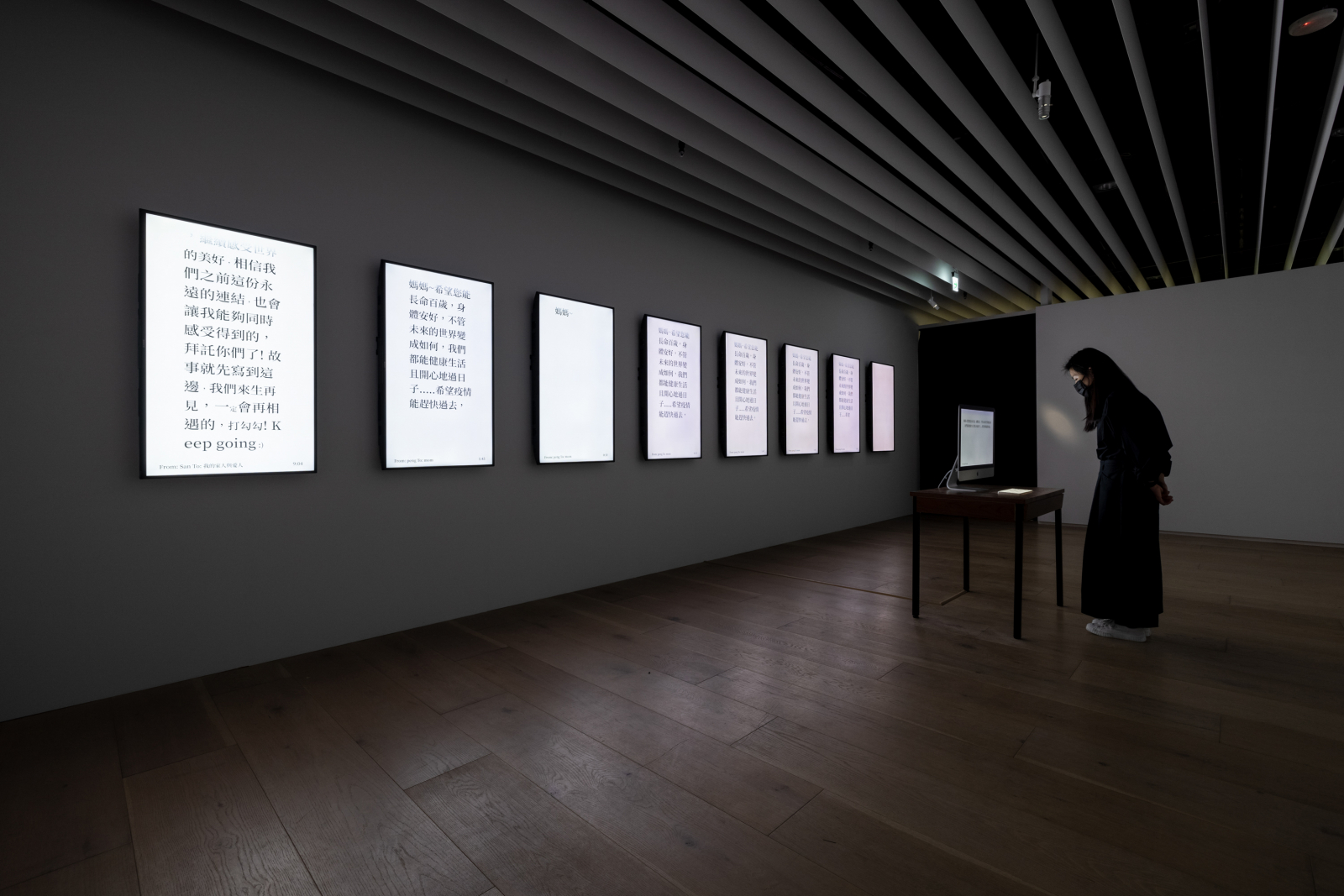
The coronavirus pandemic, erupting volcanos, and outbreaks of war…. In a contemporaneity fraught with natural calamities and man-made misfortunes, what message would you want to convey to your beloved if the end of life was neigh? The work Last Words/Type Trace by the art collective, dividual inc., displays pages of “10minLastWords” collected from a web portal. Nuances from the process of writing these last words are restored in the installation at the venue. The psychological state of participating writers in the original process of writing as revealed by the strength of each keystroke, the time spent in hesitation or contemplation, etc., are all restored in the exhibition installation. These co-creations with the artist represent nuanced final emotional accounts and the memory playback of a human life. From life’s first glimmer to a life extinguished, these radiate a narrative brilliance with each movement of the mechanical keyboard.
The 5th anniversary of Jut Art Museum: Reflecting on the post-pandemic era.
Marking the Museum’s 5th anniversary, the LIVES: Life, Survival, Living exhibition serves as an interdisciplinary dialogue that casts an eye toward the future as it re-contemplates the fundamental definitions of life, and extends these toward the complex multilayered readings of survival and living. In an exhibition preparatory process that spanned 2019 to 2022, the COVID-19 has accelerated various rehearsals and drills for the future, compelling us to gaze the fragility and resilience of life. Established rules of survival and modes of living have long made their departure. We invite each member of the audience to participate in this process of speculations about our shared future. In these turbulent times, this exhibition underscores the significance of reflecting on the self and on our times.
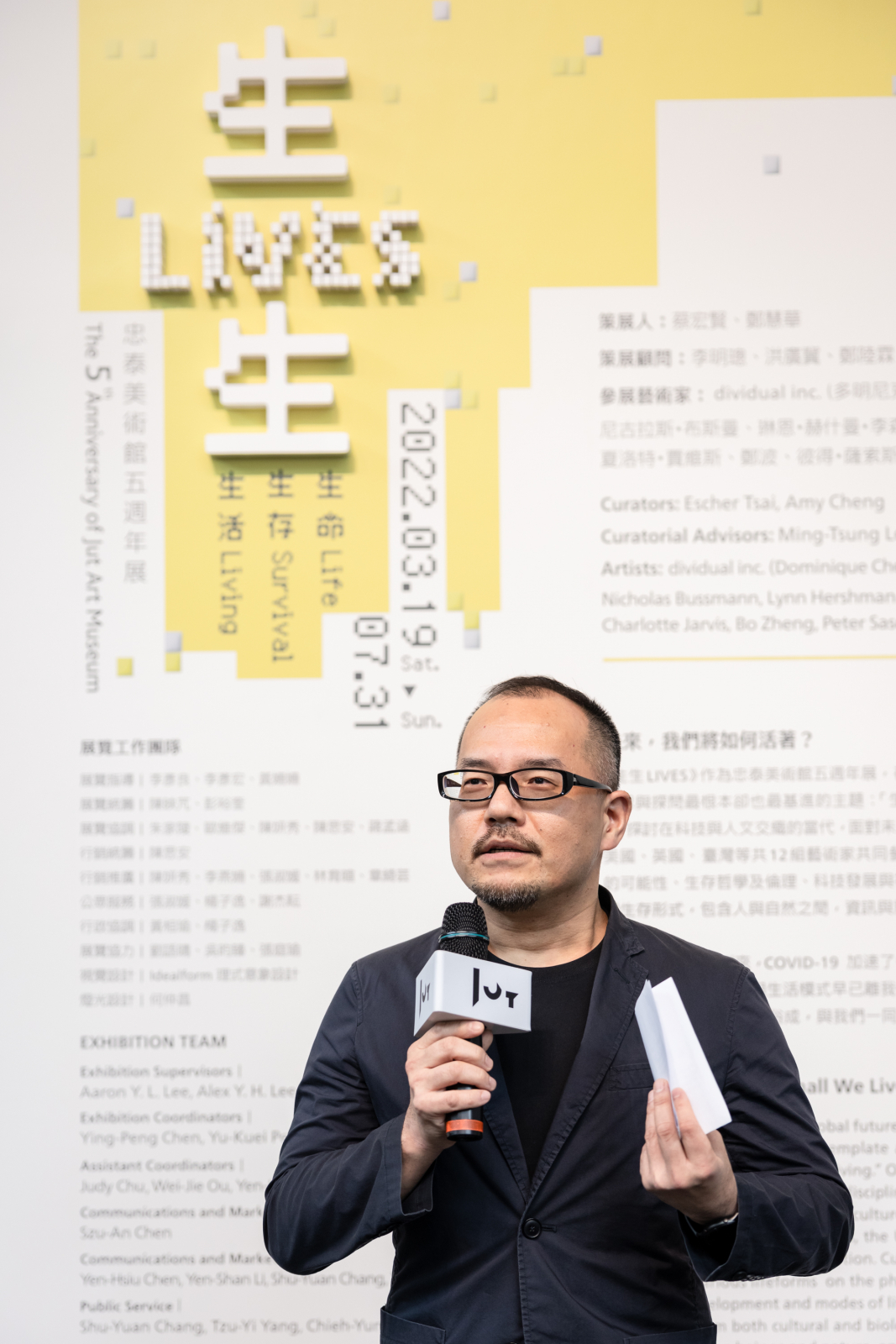
“Jut Art Museum is honored to receive support and assistance from various sectors. We are grateful to the exhibition’s two curators: Escher Tsai and Amy Cheng; to our curatorial advisors: Ming-Tsung Lee, Kuang-Chi Hung, and Lu-Lin (Jerry) Cheng; as well as to all of the participating artists. We further express our thanks to the Goethe-Institut Taipei for their hands in this international cultural exchange which has enabled us to jointly present an international contemporary art exhibition with LIVES in the midst of a world made turbulent as a result of the pandemic,” said CEO Aaron Lee.
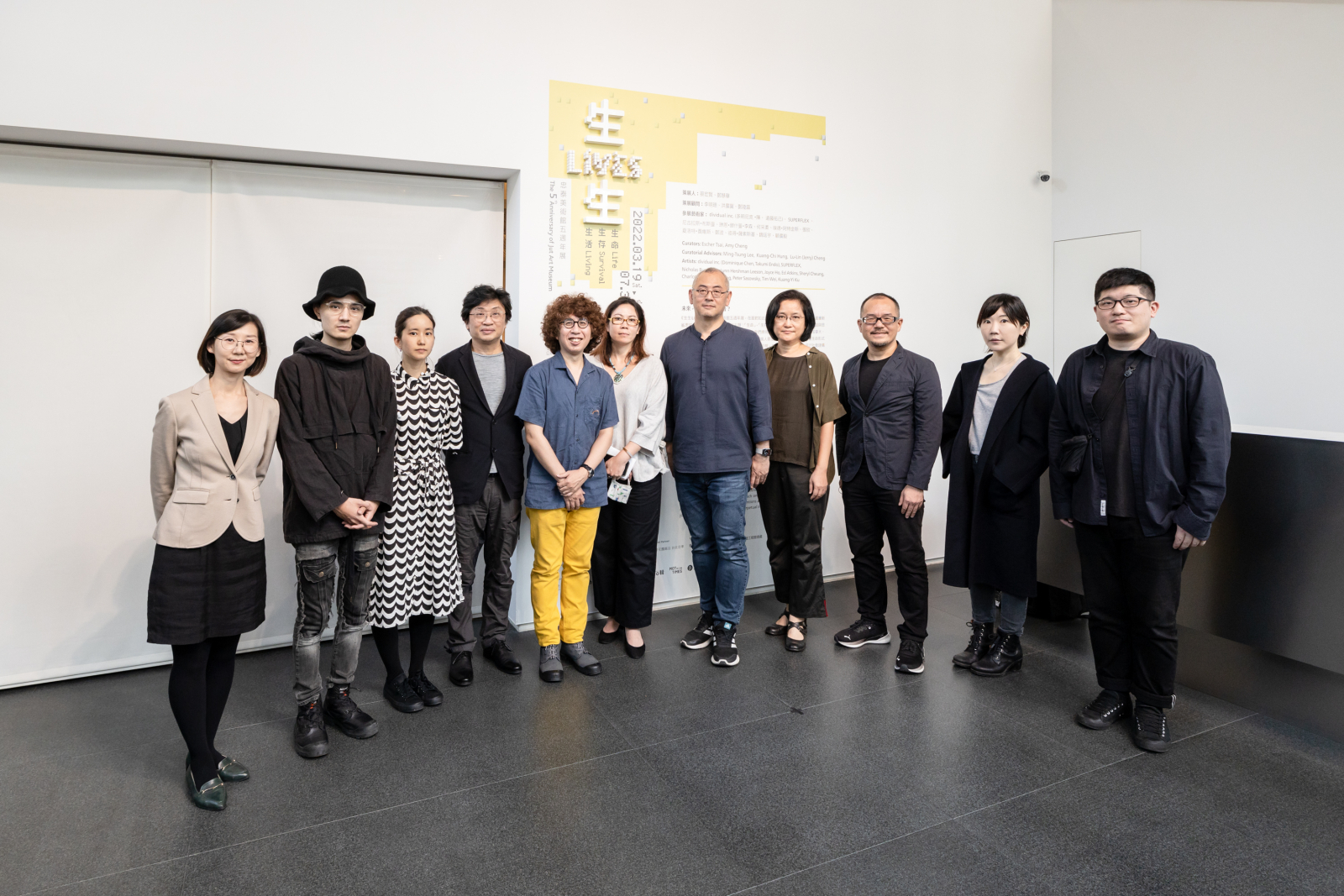
“The focus of the cultural work at Goethe-Institut is not only to hold wonderful exhibitions, but to further emphasize substantive communication between cultures that further enhance an intimate long-term (sustainable) relationship. Hence, for this event, Goethe-Institut collaborated with the Jut Art Museum to plan the exchange and panel discussion featuring artist Nicholas Bussmann. The Goethe-Institut would like to thank the Jut Art Museum for overcoming a multitude of obstacles to hold this contemporary exhibition of profound temporal significance in the midst of a pandemic,” said Educational Program Supervisor Yen-Huei Tsuei of the Goethe-Institut Taipei.
Please see the museum’s website for more information on exhibition activities and special promotions (https://jam.jutfoundation.org.tw/en/exhibition/107/3403).
【Information】
The 5th Anniversary of Jut Art Museum 《LIVES: Life, Survival, Living》
- Curators|Escher Tsai, Amy Cheng
- Curatorial Advisors|Ming-Tsung Lee, Kuang-Chi Hung, Lu-Lin (Jerry) Cheng
- Artists|
- dividual inc. / Dominique Chen (France), Takumi Endo (Japan)
- SUPERFLEX (Denmark)
- Nicholas Bussmann (Germany)
- Lynn Hershman Leeson (U.S.A)
- Joyce Ho (Taiwan)
- Ed Atkins (U.K)
- Sheryl Cheung (Taiwan)
- Charlotte Jarvis (U.K)
- Bo Zheng (China)
- Peter Sasowsky (U.S.A)
- Tim Wei (Taiwan)
- Kuang-Yi Ku (Taiwan)
- Date|2022.03.19-07.31
- Venue|Jut Art Museum, Jut Headquarter Lobby (No.178, Sec. 3, Civic Blvd., Da'an Dist., Taipei City 106, Taiwan) and the outdoor park area
- Opening Hours|TUE-SUN 10:00-18:00 (Closed on Mondays)
- Admission|General TWD 120, Concessions TWD 100 (Student, seniors aged 65 and above, and groups of 10 or more) Free Admission for the disabled and a companion, children aged 12 and under (Concessions or Free Admission upon presentation of valid proof)
- Student Day on WED|Free Admission once on Wednesdays upon presentation of valid student ID
- Organizers|Jut Art Museum
- Official Display Partner|SONY
- Official Hotel Partner|MGH Mitsui Garden Hotel Taipei Zhongxiao
- Cultural Partners|Goethe-Institut Taipei、eslite member
- Event Partner|MOT CAFÉ
- Media Partners|Art Emperor、ARTouch、UNITAS、La Vie、500 times、MOT TIMES、BIOS monthly
- Special Thanks|Parks and Street Office, Public Works Department, Taipei City Government, Dann District Office, Taipei City, Changlong Village Office (Daan Dist., Taipei)
The press kits can be downloaded in the link: https://reurl.cc/x9jNo4
Standard Usage for Images: Photo credit/by must be given where applicable; and please indicate © Jut Art Museum.

